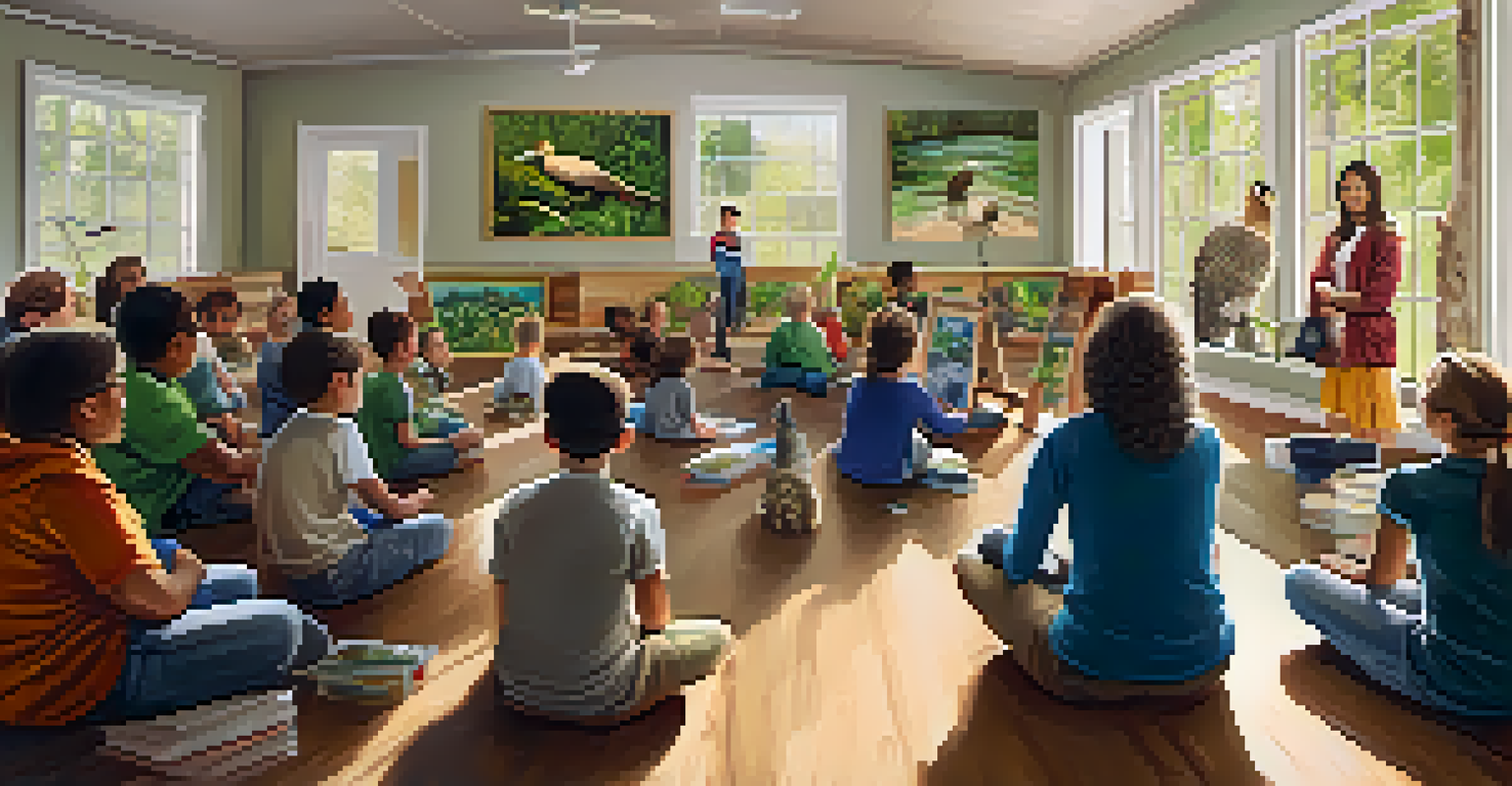The Role of Community Engagement in Wildlife Conservation

Understanding Community Engagement in Conservation Efforts
Community engagement refers to the process of involving local people in conservation efforts, fostering a sense of ownership and responsibility. It's more than just outreach; it's about building relationships and trust. When communities feel connected to their local wildlife, they are more likely to protect it.
Involve the community in the conservation process, and they will protect the resources that sustain their lives.
For example, in areas where wildlife tourism thrives, locals often take pride in showcasing their natural heritage. They understand that a healthy ecosystem can lead to economic benefits, such as job creation through eco-tourism. This economic incentive is a powerful motivator for communities to engage in conservation.
Ultimately, effective community engagement helps bridge the gap between conservationists and local populations, creating a collaborative approach to protecting wildlife. This partnership can lead to innovative solutions that benefit both the environment and the community.
The Benefits of Local Knowledge in Conservation Strategies
Local communities possess invaluable knowledge about their environment, honed through generations of interaction with nature. This knowledge can inform conservation strategies, making them more effective and culturally relevant. Engaging locals ensures that conservation efforts are tailored to the specific needs and contexts of the area.

For instance, indigenous practices often include sustainable methods of farming and fishing that have minimal impact on wildlife. By incorporating these traditional practices into modern conservation strategies, we can create more sustainable approaches that respect both nature and local cultures.
Community Engagement Boosts Conservation
Involving local communities in conservation efforts fosters ownership and leads to innovative solutions for wildlife protection.
Moreover, leveraging local knowledge fosters a sense of pride and stewardship among community members, motivating them to actively participate in conservation initiatives. When they see their input valued, it can ignite a collective effort to protect their natural resources.
Building Stronger Communities Through Conservation Initiatives
Community engagement in wildlife conservation can strengthen social ties and build community resilience. When individuals come together for a common cause, it fosters collaboration and unity. These initiatives often lead to the development of new friendships and networks, enhancing the overall community spirit.
The best way to find yourself is to lose yourself in the service of others.
Consider a local conservation group that organizes clean-up days or tree-planting events. These activities not only improve the environment but also encourage participants to work together toward a shared goal. The bonds formed during these events can lead to more sustained community involvement in future conservation efforts.
Furthermore, as communities become more invested in their local wildlife, they may also become more proactive in addressing other social issues, creating a ripple effect that benefits the entire community. This interconnectedness highlights the broader impact of conservation beyond just wildlife.
Empowering Communities to Protect Their Wildlife
Empowerment is a key aspect of effective community engagement. By providing training and resources, conservation organizations can help locals take charge of their conservation efforts. This empowerment fosters self-sufficiency and encourages innovative solutions to wildlife protection.
For example, workshops on sustainable practices, such as organic farming or wildlife-friendly tourism, can equip community members with the skills they need to thrive while protecting their environment. This way, they can become advocates for both their livelihoods and local wildlife.
Local Knowledge Enhances Strategies
Utilizing the invaluable insights of local communities makes conservation strategies more effective and culturally relevant.
When communities feel empowered, they are more likely to take initiative and act as stewards of their natural resources. This proactive approach can lead to more sustainable conservation outcomes and a stronger commitment to protecting local wildlife.
The Role of Education in Community Engagement
Education plays a crucial role in fostering community engagement in wildlife conservation. By raising awareness about the importance of biodiversity and the threats facing wildlife, communities can better understand the need for conservation. Educational programs can inspire a new generation of conservationists.
Schools, local organizations, and community centers can host workshops and seminars to teach residents about their local ecosystems. For instance, inviting experts to share insights on wildlife conservation can spark interest and motivate community members to get involved.
Moreover, when people are educated about the impacts of their actions on wildlife, they are more likely to make environmentally conscious decisions. This knowledge empowers individuals to advocate for conservation efforts within their community, amplifying the collective voice for wildlife protection.
Collaborative Conservation: A Model for Success
Collaborative conservation is an approach that brings together various stakeholders, including local communities, government agencies, and conservation organizations. This model emphasizes the importance of working together to achieve common goals. When diverse perspectives are considered, conservation strategies become more robust and effective.
For example, in a collaborative project, local fishermen, conservationists, and government officials might work together to establish sustainable fishing practices. Each group brings unique insights, resulting in solutions that benefit both the community and the ecosystem.
Empowerment Drives Sustainable Action
Providing training and resources empowers communities to take charge of their conservation efforts, leading to better outcomes for wildlife.
This collaboration not only leads to better conservation outcomes but also fosters a sense of shared responsibility. When all parties feel invested in the success of a project, it creates a stronger commitment to protecting wildlife for future generations.
Challenges and Solutions in Community Engagement
While community engagement in wildlife conservation offers many benefits, it also faces challenges. Miscommunication, lack of resources, and differing priorities can hinder effective collaboration. It's essential to recognize these obstacles and work towards solutions that foster meaningful engagement.
For instance, ensuring that communication is clear and inclusive can help bridge gaps between conservationists and local communities. Providing resources, such as funding for community-led projects, can also empower locals to take initiative in their conservation efforts.

Additionally, ongoing dialogue and flexibility in adapting strategies to meet community needs can enhance engagement. When communities see that their voices are heard and valued, they are more likely to participate actively in wildlife conservation efforts.